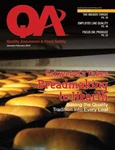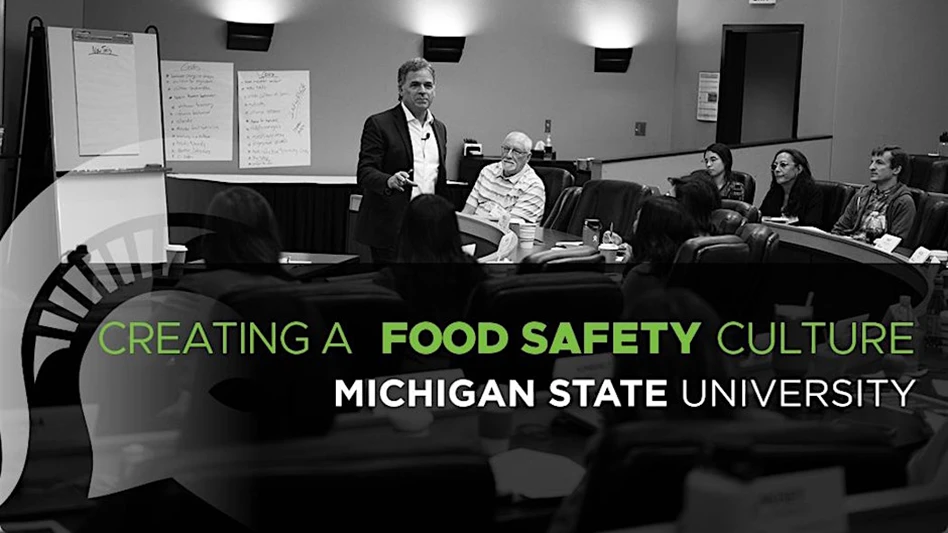When a crisis occurs, it is the amount of preparation employees have received that often makes the difference between success or failure—or, as in these real-world examples, life or death.
They often prepared for things that never occurred, but when the worst did happen, "it was the application of a lifetime of training, procedures and teamwork" that enabled US Airways co-pilot Jeff Skiles and Captain Chesley "Sully" Sullenberger to land safely on the Hudson River after losing both engines. The river landing of the commercial passenger plane, which struck a flock of geese on its climb out from LaGuardia Airport in January 2009, has often been termed the Miracle on the Hudson. "I wasn’t scared," Skiles said in a keynote address at the 2009 Worldwide Food Expo, explaining, "We had a window to see out and we had a plan." The magnitude of training and preparation carried to the rest of the team as well, Skiles added. He relayed the comments of one flight attendant who said she was scared when she didn’t know what was happening, but once told to implement brace-down procedures, she put aside thoughts of herself and went into action with what she had trained on for 29 years. "Her training took over in the crisis. She knew what to do and she wasn’t afraid anymore."
When an intoxicated woman fell off a train platform in Boston, it was the subway driver’s training and fellow Massachusetts Bay Transportation Authority teamwork that saved her life. After receiving a radio call from Jacqueline Osorio, who was standing on the platform when the woman fell, driver Charice Lewis saw people waving frantically, then saw the woman on the tracks. "So I just threw it in emergency, just like I'm supposed to do," Lewis said. "And it stopped just in time not to hit her."
*****
Serious Gaming
Before the fall of the economy, serious gaming was beginning to take a serious role in corporate training. As the economy begins a seeming, if sluggish, recovery, it would be beneficial for companies to
take a new look at this technology for
the training and education of workers.
Serious gaming—digital games designed to teach, train or market—helps professionals "hone their business and technology skills in a compelling, familiar video game format," according to an IBM announcement of a new version of its serious game, INNOV8.
Interest in serious games has grown in recent years, due to the ability to create relatively inexpensive, realistic environments in a virtual setting. In addition, the games can provide a multi-sensory environment for multiple learning styles; drill and practice to reinforce information retention; the inclusion of learning activities too dangerous or costly to replicate in a real-world situation; and the potential for developing higher-order skills such as critical thinking, strategic thinking, problem solving and teamwork.
*****
Training
Front-Line
Hispanics
One of the greatest workplace challenges for first-generation, front-line Hispanic employees is their inability to communicate effectively in English. However, they tend to rise above this challenge with an admirable work ethic, said Isaac Botbol, founder and CEO of Training for Hispanics in the Workplace. "They come to work, ready to roll up their sleeves and keep the production lines running at whatever capacity is required."
Botbol has worked with Hispanic employees for almost 20 years, five of which were with Sara Lee Foods in leadership training and English as second language. Particularly as new employees, the strong work ethic is highly pronounced, Botbol said, explaining that they are eager to show their ability to do whatever it takes to move the product out the door. "First-generation, front-line Hispanic employees adhere to a concept they call darle ganas," he said. "It means giving it your all and then more."
The natural tendency of new employees to work to impress their bosses is even more pronounced in first-generation His-panics because of their awareness of the cultural and language differences, and their understanding that their inability to speak a common language separates them and diminishes the flow of communication. They feel they have more to prove than other employees, Botbol said, so are eager to demonstrate a "can do" attitude; follow instructions, guidelines and policies; and make a positive impact.
But, he added, whether the employees maintain or improve on that initial level of energy is largely determined by the leadership skills of their team leaders. New employees expect the team leader to set the tone, guide them and show them the ropes. "The attitude [new employees] bring provides a momentous occasion for leaders to exercise their mentoring and leadership abilities," he said. "This is the time for team leaders to demonstrate commitment, guidance and support."
Building trust at this early stage will not only be appreciated but also remembered, Botbol said. Thus, the single message that leaders should focus on is: "Welcome. We are so glad to have you on our team. We want to help you succeed!" Such upbeat messages will have a lasting and positive impression.
*****
Leadership:
Coaching and Managing an Effective Food Safety Culture
Coaching and managing food safety uses leadership, human resource best practices, training techniques and coaching guidelines. Tara Paster, president of Paster Train-ing, outlines three key practices to support your existing food safety culture:
Leadership is vital to create the food safety and defense vision for your organization. Once created, the next step is to initiate the system by which coaches can set team expectations and provide quality training, ongoing monitoring and effective verification.
Key to successful coaching are:
Attitude. A coach must be positive and sincerely care about those on the team. Be sincere with verbal and non-verbal communication, and always communicate with compassion.
Timing. Recognize and reinforce positive behaviors at the beginning or end of the shift, with the entire team or one on one. This can be done with verbal and written communication and supported with awards, pins, money, gifts, personal time, celebrations, etc.
Discretion. Negative behavior or need for improvement should be discussed one on one in a private professional setting. For example, if an employee cross-contaminates a piece of equipment, take immediate, but respectful and private corrective action.
Human resource best practices begin with selecting and hiring the right person for the right job. Because maintaining a food safety culture requires constant feedback and coaching, seek candidates who have key attributes that fit and support your team and culture. Be sure that candidates are trainable and coachable, respond well to positive and constructive feedback, and have key strengths such as ambition, loyalty, dependability and a positive outlook.

Explore the February 2010 Issue
Check out more from this issue and find your next story to read.
Latest from Quality Assurance & Food Safety
- Calbee America Launches California R&D Innovation Center
- PepsiCo Completes Acquisition of Siete Foods
- Non-GMO Project Launches Non-Ultraprocessed Foods Verification
- FDA to Hold Webinar on Updated ‘Healthy’ Claim
- High-Tech Partnership Creates Natural Blue Color for Greener Tomorrow
- Kraft Heinz Hosts Innovation Challenge for Sustainable Packaging
- FDA Requests Information on Poppy Seeds
- Danone North America Opens Applications for Annual Gut Microbiome, Yogurt and Probiotics Fellowship Grant





